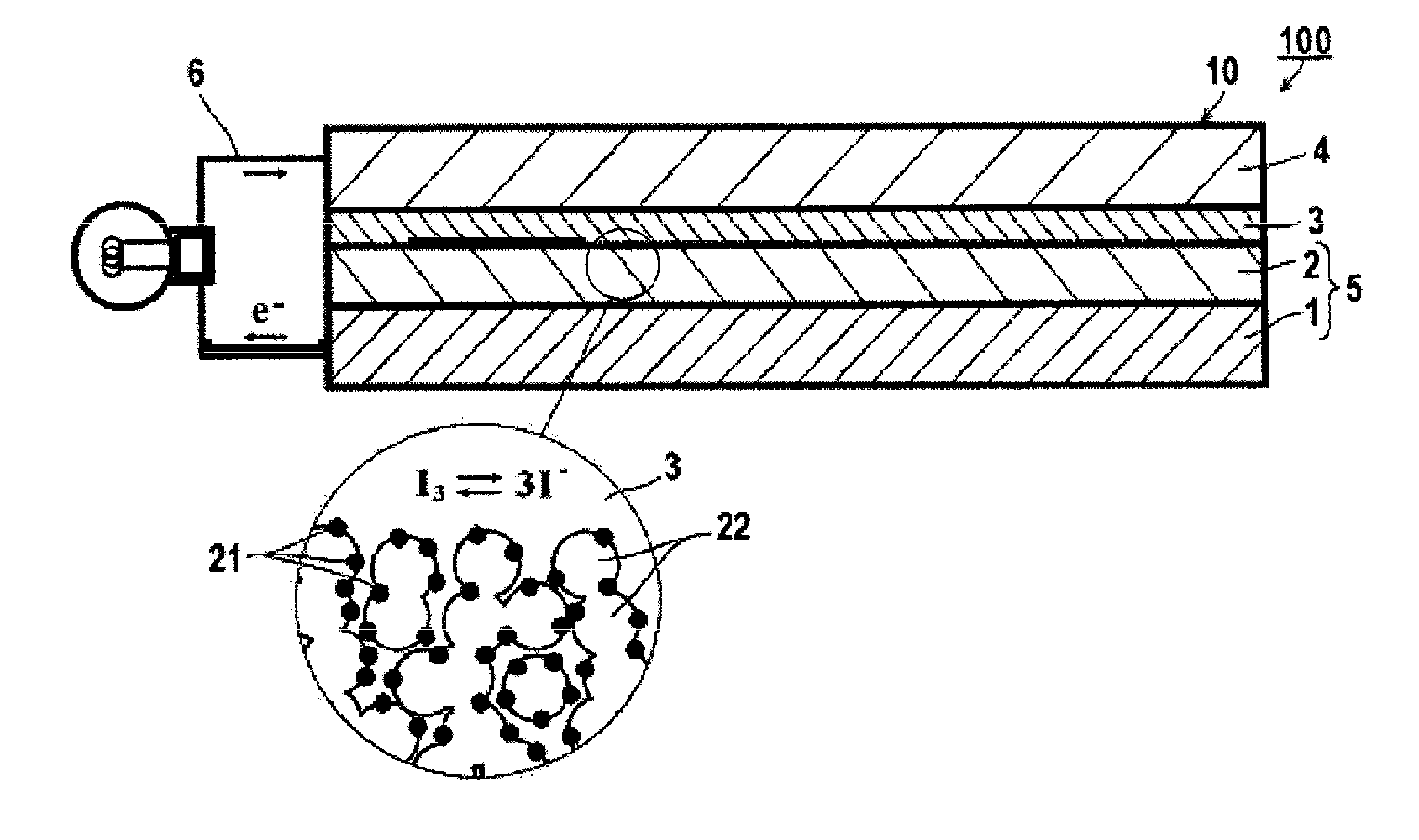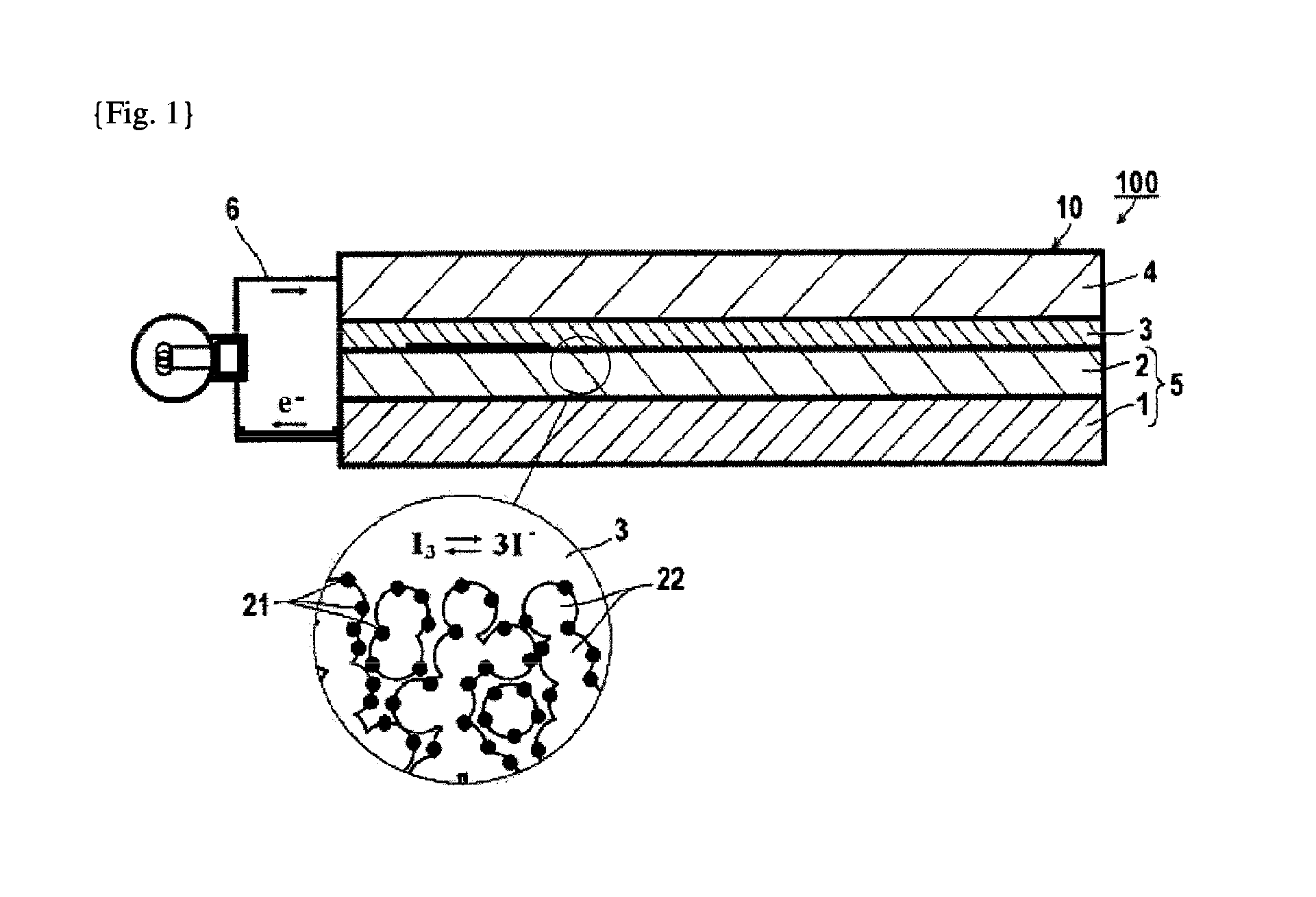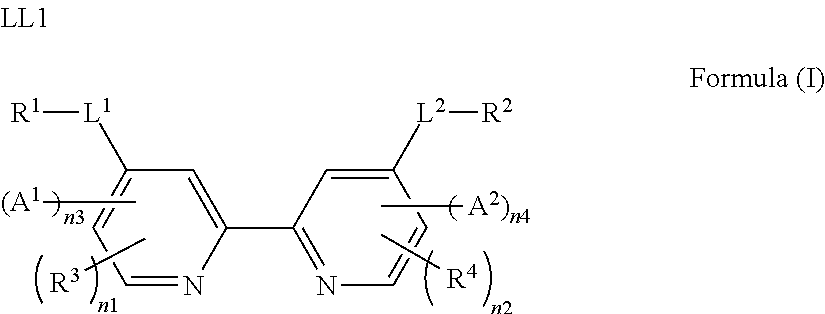Metal complex dye, photoelectric conversion element and dye-sensitized solar cell
a solar cell and photoelectric conversion technology, applied in the field of metal complex dyes, photoelectric conversion elements and dye-sensitized solar cells, can solve the problems of long energy payback time, low conversion efficiency of solar cells that have been applied so far, and poor durability in many cases, so as to achieve good photoelectric conversion characteristics and reduce the effect of conversion efficiency and excellent photoelectric conversion characteristics
- Summary
- Abstract
- Description
- Claims
- Application Information
AI Technical Summary
Benefits of technology
Problems solved by technology
Method used
Image
Examples
examples
Preparation of Exemplified Dyes
(Preparation of Exemplified Compound D-1-1a)
[0129]The exemplified dye D-1-1a was prepared according to the method shown in the following scheme.
(i) Preparation of Compound d-1-2
[0130]To 70 mL of triethylamine and 50 mL of tetrahydrofuran, 25 g of Compound d-1-1, 33.8 g of Pd(dba), 8.6 g of triphenyl phosphine, 2.5 g of copper iodide, and 25.2 g of 1-heptyne were added. The resultant mixture was stirred at room temperature, and stirred at 80° C. for 4.5 hours. After concentration, purification was performed by means of column chromatography, and thus 26.4 g of Compound d-1-2 was obtained.
(ii) Preparation of Compound d-1-4
[0131]Under a nitrogen atmosphere at −15° C., 6.7 g of Compound d-1-3 was dissolved in 200 mL of THF (terahydrofuran), and LDA (lithium diisopropylamide) that was separately prepared was added dropwise in an amount of 2.5 equivalents of Compound d-1-3, and the resultant mixture was stirred for 75 minutes. Then, a solution in which 15 g ...
experiment 1
Production of Photoelectric Conversion Element
[0184]On a glass substrate, a film of tin oxide doped with fluorine was formed by sputtering as a transparent conductive film, and this film was scribed with a laser to partition the transparent conductive film into two parts. Anatase type titanium oxide particles (average particle size: 50 nm) were sintered on one part of the electrically conductive films, and thus a light-receiving electrode was prepared. Thereafter, a dispersion liquid containing silica particles and rutile type titanium oxide at a ratio of 40:60 (mass ratio) was prepared, and this dispersion liquid was applied on the light-receiving electrode described above and sintered. Thus, an insulating porous body was formed. Subsequently, a carbon electrode was formed as a counter electrode.
[0185]Next, the glass substrate having the insulating porous body formed thereon was immersed for 48 hours in an ethanol solution of each of the sensitizing dyes indicated in the following ...
experiment 2
1. Preparation of Raw Material Compound Solution for ITO Film
[0190]Were dissolved 5.58 g of indium(III) chloride tetrahydrate and 0.23 g of tin(II) chloride dihydrate in 100 mL of ethanol, and thus a raw material compound solution for ITO film was prepared.
2. Preparation of Raw Material Compound Solution for FTO Film
[0191]Was dissolved 0.701 g of tin(IV) chloride pentahydrate in 10 mL of ethanol, and 0.592 g of a saturated aqueous solution of ammonium fluoride was added thereto. This mixture was completely dissolved in an ultrasonic bath over about 20 minutes, and thus a raw material compound solution for FTO film was prepared.
[0192]Then, the surface of a heat resistant glass plate having a thickness of 2 mm was subjected to chemical cleaning and was dried. Subsequently, this glass plate was placed in a reactor and was heated with a heater. When the heating temperature of the heater reached 450° C., the raw material compound solution for ITO film obtained was sprayed over the glass ...
PUM
| Property | Measurement | Unit |
|---|---|---|
| absorption wavelength | aaaaa | aaaaa |
| semiconductor | aaaaa | aaaaa |
| electrically conductive | aaaaa | aaaaa |
Abstract
Description
Claims
Application Information
 Login to View More
Login to View More - R&D
- Intellectual Property
- Life Sciences
- Materials
- Tech Scout
- Unparalleled Data Quality
- Higher Quality Content
- 60% Fewer Hallucinations
Browse by: Latest US Patents, China's latest patents, Technical Efficacy Thesaurus, Application Domain, Technology Topic, Popular Technical Reports.
© 2025 PatSnap. All rights reserved.Legal|Privacy policy|Modern Slavery Act Transparency Statement|Sitemap|About US| Contact US: help@patsnap.com



